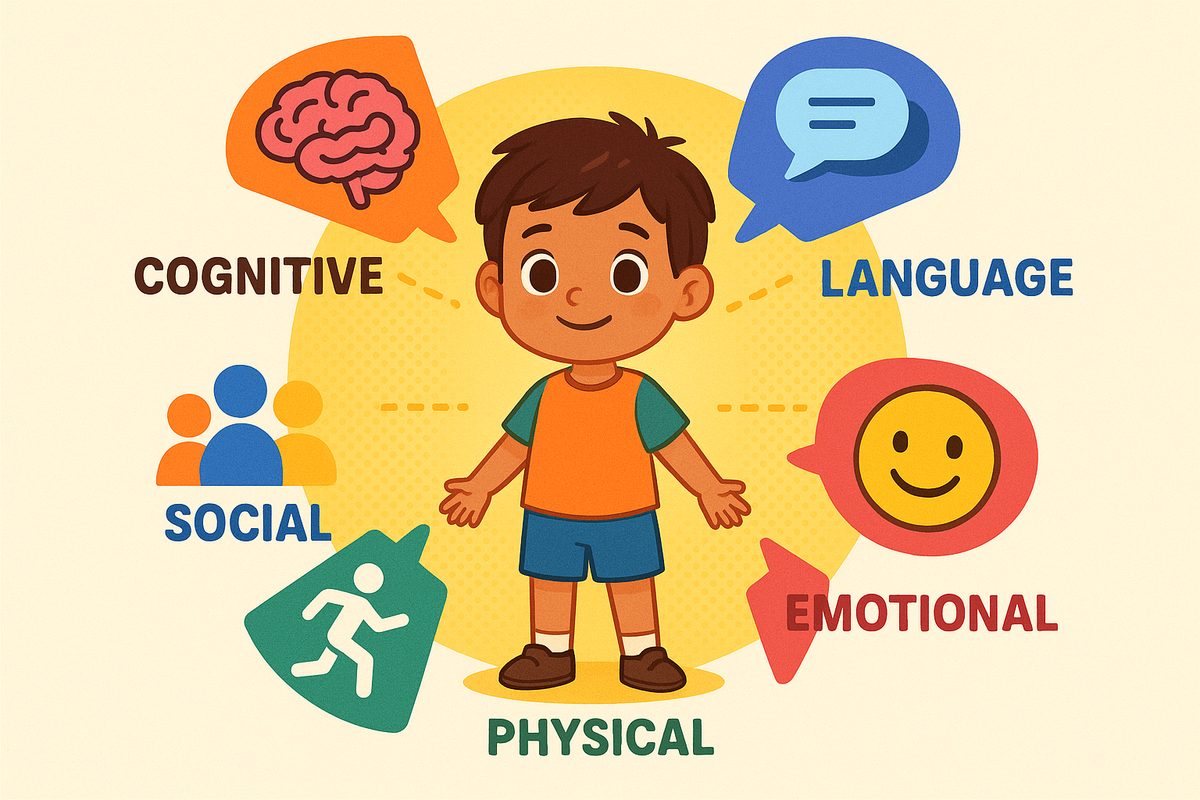G – Growth: Children Learn and Grow Through Play!

Welcome to the next step in our GREATEST Roadmap for purposeful parenting. So far, we’ve explored the many types of play—free play, pretend play, sensory play, and screenplay. Each form offers a unique and powerful avenue for exploration, imagination, expression, and learning in the early developmental stage.
As we revisit “G – Growth,” we affirm one foundational principle: Children learn and grow through play! Play is not a luxury—it is the essential work of childhood. Through play, children explore their world, test ideas, connect with others, and build the skills they need to flourish in the present and future.
A landmark study from the American Academy of Pediatrics reminds us:
*“Play is not frivolous. It is essential to development because it contributes to the child's cognitive, physical, social, and emotional well-being...”*¹
The Five Developmental Domains
Children grow across multiple dimensions. To truly thrive, their development must be supported in each of the following main domains:
- Physical Development: Strengthening muscles and coordination through gross motor (e.g., climbing, running) and fine motor (e.g., drawing, buttoning) skills. These lay the foundation for independence and physical competence.
- Emotional Development: Learning to recognize, express, and manage feelings is key to building resilience, self-regulation, and empathy.
- Social Development: Through relationships and play, children learn to cooperate, resolve conflict, take turns, and develop a sense of community.
- Cognitive Development: Thinking, reasoning, remembering, and problem-solving all fall under this domain. This domain helps children make sense of the world and develop curiosity and focus.
- Language Development: Communication, both verbal and nonverbal, helps children share their thoughts, understand others, and engage in meaningful interactions.
The Interconnected Nature of Growth
These domains are not separate silos—they are profoundly interconnected. When children play, they often develop multiple skills at once. For example, a game of pretend restaurant can involve:
- fine motor skills (pouring, writing menus),
- social interaction (taking turns, negotiating roles),
- cognitive planning (sequencing orders), and
- expressive language (taking and delivering orders).
Research underscores the importance of nurturing all these areas. A longitudinal study by the National Institute of Child Health and Human Development found that children exposed to enriched early learning environments that supported multiple domains—cognitive, emotional, and social—demonstrated better academic performance and healthier relationships into adolescence and adulthood.²
This highlights the value of holistic development, supporting the whole child. When we create environments that nurture every aspect of a child’s growth, we lay the groundwork for confident, competent, compassionate, and productive individuals.
What’s Ahead?
This upcoming series will explore how play fosters each developmental domain. Our journey begins with a look at Play and Physical Development, where we will discover how movement, manipulation, and active engagement shape children’s physical skills and self-confidence.
Before You Go…
Think back to your childhood: What was your favorite game to play? Can you identify the physical, emotional, or social skills you developed through it?
This week, observe a child at play—what developmental domains are you witnessing in action?
Let’s grow together.
Footnotes
¹ Yogman, M., Garner, A., Hutchinson, J., Hirsh-Pasek, K., & Golinkoff, R. M. (2018). The Power of Play: A Pediatric Role in Enhancing Development in Young Children. American Academy of Pediatrics, 142(3). https://doi.org/10.1542/peds.2018-2058
² NICHD Early Child Care Research Network. (2003). Does quality of child care affect child outcomes at age 4½? Developmental Psychology, 39(3), 451–469. https://doi.org/10.1037/0012-1649.39.3.451